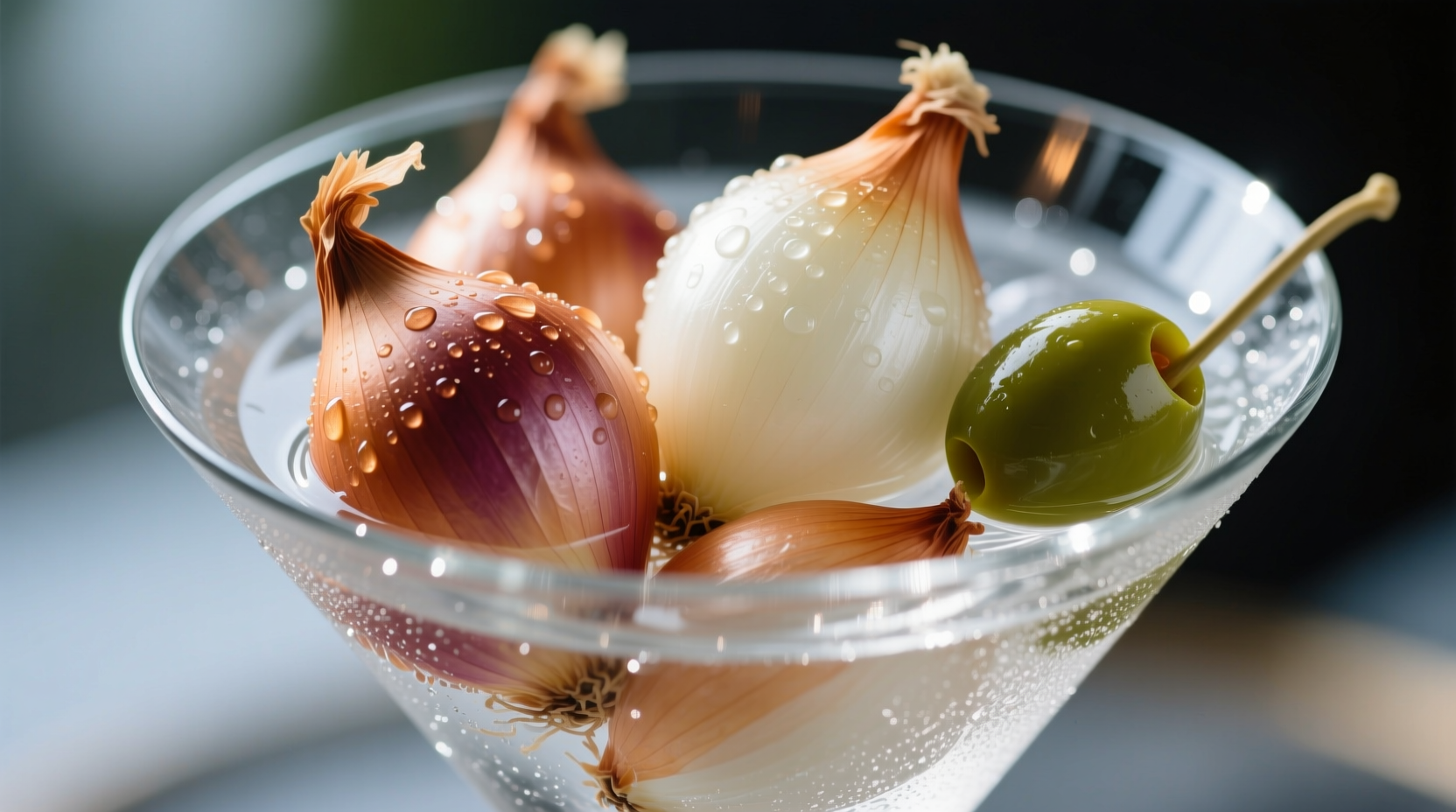Ever wondered why your Gibson martini comes with that tiny yellow onion instead of an olive? That's no ordinary allium—it's a carefully selected cocktail onion, the unsung hero of sophisticated mixology. Understanding these petite flavor enhancers transforms your home bartending from amateur to artisanal, whether you're crafting a classic martini variation or experimenting with modern cocktail innovations.
The Evolution of Cocktail Onions: From Prohibition Era to Craft Cocktail Renaissance
Cocktail onions emerged during Prohibition when bartenders sought creative ways to enhance spirits' flavors while masking poor-quality alcohol. The Gibson cocktail, credited to either a San Francisco businessman or a New York socialite depending on historical accounts, popularized this garnish in the early 1900s. Originally using small pearl onions, the industry shifted to specifically cultivated Allium cepa varieties in the 1930s for their consistent size and milder flavor profile.
Post-World War II, mass production standardized the turmeric-brined version we recognize today. The craft cocktail movement of the 2000s revived interest in premium, small-batch cocktail onions with complex brines featuring ingredients like vermouth, bay leaves, and black peppercorns. Modern mixologists now experiment with heirloom varieties and artisanal pickling techniques that elevate this humble garnish into a flavor component.
What Sets Cocktail Onions Apart: A Practical Comparison
| Onion Type | Size Range | Flavor Profile | Primary Use | Storage Method |
|---|---|---|---|---|
| Cocktail onions | 0.5-1 inch diameter | Sweet, mild, with subtle tang from brine | Cocktail garnish (Gibson, martini variations) | Refrigerated in brine |
| Pearl onions | 0.75-1.5 inches | Stronger, more pungent when raw | Cooking (stews, roasts) | Cool, dry place |
| Shallots | 1-2 inches | Delicate, garlic-like notes | Culinary applications | Room temperature |
| Boiling onions | 1.5-2.25 inches | Most pungent of small onions | Slow cooking | Cool, dry place |
This comparison reveals why substituting regular pearl onions in cocktails creates an unbalanced drink. Cocktail onions' specialized cultivation and pickling process delivers the precise flavor profile needed to complement rather than overwhelm spirits. The USDA Agricultural Research Service confirms that the specific Allium cepa varieties used for cocktail onions contain 30% less pyruvic acid than standard onions, directly contributing to their milder taste (USDA ARS, 2023).
Mastering Cocktail Applications: Beyond the Gibson
While the Gibson remains the signature cocktail onion showcase, modern mixology has expanded their applications. The key lies in understanding how the brine's acidity and subtle sweetness interact with different spirits:
- Vodka martinis: Use traditional yellow cocktail onions for classic presentation
- Gin variations: Try blue cheese-stuffed cocktail onions to complement botanical notes
- Whiskey cocktails: Opt for red onion varieties pickled in apple cider vinegar for smoky drinks
- Modern creations: Skewer with juniper berries for Nordic-inspired cocktails
Professional bartenders at the Museum of the American Cocktail note that the ideal cocktail onion should provide just enough flavor to enhance the drink without dominating it—a delicate balance achieved through proper brining time and ingredient ratios.

Shopping Smart: Selecting Quality Cocktail Onions
Not all cocktail onions deliver the same experience. When selecting store-bought options, check for these quality indicators:
- Consistent size: Uniform 3/4-inch diameter ensures even flavor distribution
- Translucent appearance: Cloudy brine indicates fermentation issues
- Subtle turmeric hue: Bright yellow suggests artificial coloring
- Firm texture: Mushy onions indicate over-processing
For the best results, choose brands that specify "naturally fermented" on the label. The American Distilling Institute recommends checking ingredient lists for minimal additives—ideally just onions, vinegar, salt, and natural flavorings (American Distilling Institute, 2024).
Artisanal Brining: Crafting Your Own Cocktail Onions
Creating custom cocktail onions elevates your mixology game. This professional technique yields superior results to store-bought versions:
- Select 1 pound of true cocktail onions (not pearl onions)
- Prepare brine: 1 cup dry vermouth, 1 cup white wine vinegar, 1/2 cup water, 2 tbsp sugar, 1 tbsp salt
- Add flavor enhancers: 1 tsp black peppercorns, 1 bay leaf, 3 allspice berries
- Simmer brine 5 minutes, then cool completely
- Peel onions and submerge in brine
- Refrigerate minimum 72 hours before use
This method creates complex flavor layers that complement premium spirits. The extended curing time allows the brine to penetrate without overwhelming the onion's natural sweetness. For adventurous mixologists, adding a single saffron thread per jar creates a visually striking golden variation perfect for special occasions.
Avoiding Common Cocktail Onion Mistakes
Even experienced home bartenders make these critical errors that compromise cocktail quality:
- Using room temperature onions: Always chill both onions and cocktail glass—warm onions melt ice too quickly
- Over-brining: More than 14 days creates overly sour onions that dominate the drink
- Incorrect skewering: Pierce through the equator, not pole-to-pole, to maintain structural integrity
- Mismatched spirit pairings: Avoid pairing with delicate floral gins that get overwhelmed
Remember that cocktail onions aren't just garnish—they're functional flavor components. The optimal ratio is one onion per 3 ounces of cocktail, allowing the subtle allium notes to enhance rather than dominate.
Expanding Your Mixology Toolkit
Once you've mastered traditional applications, experiment with these innovative techniques:
- Create onion-infused spirits by steeping cocktail onions in vodka for 24 hours
- Use the brine as a base for savory cocktails (1:4 ratio with spirit)
- Dehydrate onions for edible cocktail decorations
- Pair with blue cheese for umami-rich garnishes
These advanced methods demonstrate why understanding cocktail onions matters—they're not just decorative elements but integral components that can transform your cocktail experience from ordinary to extraordinary. The next time you're crafting a Gibson or experimenting with new recipes, remember that the perfect cocktail onion makes all the difference between a good drink and a memorable one.











 浙公网安备
33010002000092号
浙公网安备
33010002000092号 浙B2-20120091-4
浙B2-20120091-4